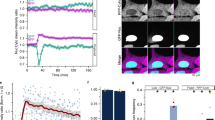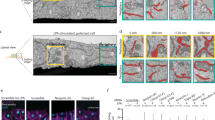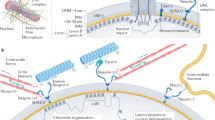Abstract
VISIBLE local modification of the cellular nuclear membrane is usually considered a phenomenon associated with the discharge of nucleic acid from nucleus to cytoplasm. Barr and Bertram1 have noted thin ‘nuclear caps’ in nerve cells concomitant with the reproduction of Nissl substance during recovery from antidromic stimulation. Such ‘nuclear caps’ appear as distinctive dense or thickened local areas of the nuclear membrane which stain with basic dyes, give positive histochemical reactions for nucleic acid, and absorb heavily at 2600 A. with ultra-violet light methods. Electron studies also indicate that the membrane may be thickened and modified during regeneration after axonic severance2.
This is a preview of subscription content, access via your institution
Access options
Subscribe to this journal
Receive 51 print issues and online access
$199.00 per year
only $3.90 per issue
Buy this article
- Purchase on SpringerLink
- Instant access to full article PDF
Prices may be subject to local taxes which are calculated during checkout
Similar content being viewed by others
References
Barr, M. L., and Bertram, E. G., J. Anat., Lond., 85, 171 (1951).
Hartmann, J. F., Anat. Rec. 118, 19 (1954).
Thomas, O. L., Quart. J. Micro. Sci., 89, 333 (1948).
Author information
Authors and Affiliations
Rights and permissions
About this article
Cite this article
THOMAS, O. Mitochondrial Kinetics. Nature 180, 1487 (1957). https://doi.org/10.1038/1801487a0
Issue date:
DOI: https://doi.org/10.1038/1801487a0



